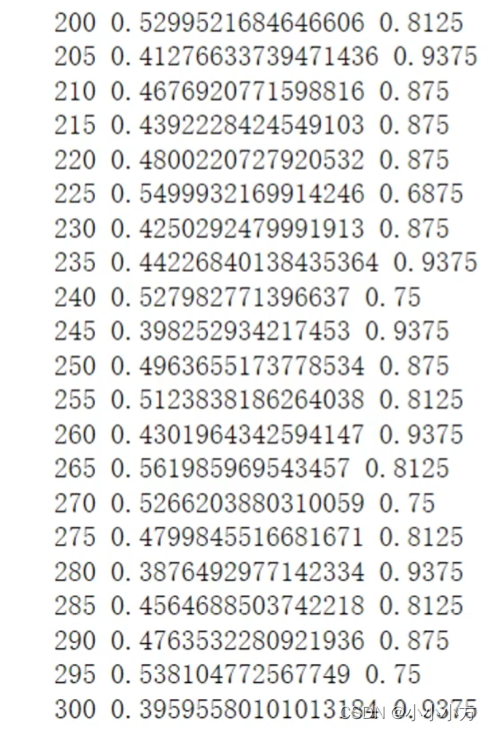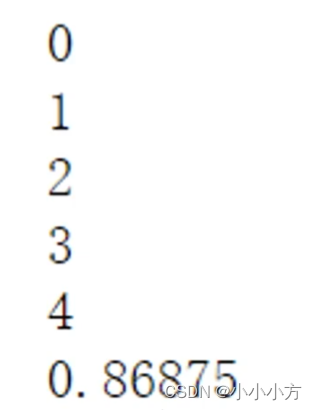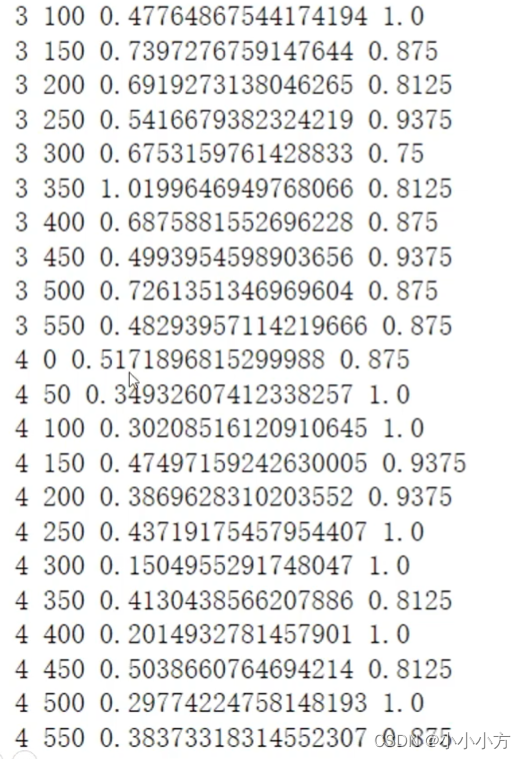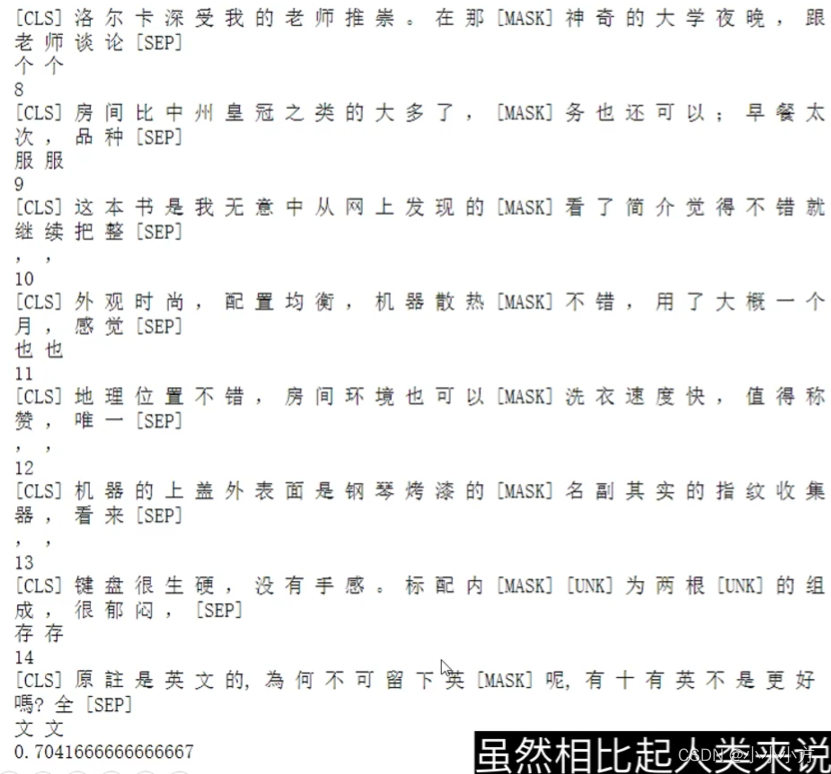-
Hugging Face学习
了解
Huggingface官网: link。Huggingface是一个开源社区,它提供给了先进的NLP模型,数据集以及其他的工具:数据集,数据集的下载地址;各种预训练模型。
Hugging Face Transformer是Hugging Face的最核心的项目,使用它可以做以下的事情:
1.直接使用预训练模型进行推理
2.提供了大量预训练模型使用
3.使用预训练模型进行迁移学习几个简单的API:
1.AutoTokenizer:用于分词
2.AutoFeatureExtractor:用于特征提取
3.AutoProcessor:用于数据处理
4.AutoModel:用于加载模型很多情况下不能满足需求,使用HuggingFace模型做迁移学习
1.选择一个和你的任务类似的任务的预训练模型,或者直接选择一个与任务无关的基础模型
2.从原有模型中拿出主干部分
3.开始自己的下游任务,构建成新的模型
4.开始训练

transformer模型一般有三个部分组成:1.tokennizer 2.model 3.post processing
tokenizer把输入的文本做切分,然后变成向量
Model负责根据输入的变量提取语言信息,输出logits;encoder模型、decoder模型、sequence2sequence模型
post processing根据模型输出的语义信息,执行nlp任务主要的模型:
自回归:GPT2、transformer-XL、XLNet
自编码:bert、albert、roberta、electra等案列
基础
# 导入模型 import torch from transformers import BertModel,BertTokenizer,BertConfig tokenizer = BertTokenizer.from_pretrained('bert-base-chinese') config = BertConfig.from_pretrained('bert-base-chinese') config.update({'output_hidden_states':True}) #直接更改模型配置 model = BertModel.from_pretrained('bert-base-chinese',config=config) # 测试MLM和NSP任务的效果 # 对单个句子编码 print(tokenizer.encode("生活的真谛是美和爱")) # 对一组句子编码 print(tokenizer.encode_plus("生活的真谛是美和爱","说的太好了")) # 使用英文的base模型示例一个MLM任务 from transformers import pipeline unmasker = pipeline("fill-mask",model = "bert-base-uncased") print(unmasker("The goal of life is [MASK].", top_k=5)) 运行结果: [{'sequence': 'the goal of life is life.', 'score': 0.1093331053853035, 'token': 2166, 'token_str': 'life'}, {'sequence': 'the goal of life is survival.', 'score': 0.039418816566467285, 'token': 7691, 'token_str': 'survival'}, {'sequence': 'the goal of life is love.', 'score': 0.03293060138821602, 'token': 2293, 'token_str': 'love'}, {'sequence': 'the goal of life is freedom.', 'score': 0.03009609691798687, 'token': 4071, 'token_str': 'freedom'}, {'sequence': 'the goal of life is simplicity.', 'score': 0.024967176839709282, 'token': 17839, 'token_str': 'simplicity'}]from transformers import BertTokenizer # 加载预训练字典和分词方法 tokenizer=BertTokenizer.from_pretrained( pretrained_model_name_or_path='bert-base-chinese', cache_dir=None, force_download=False ) sents = [ '选择珠江花园的原因是方便', '笔记本的键盘确实爽', '房间太小,其他的一般', '今天才知道这本书还有第6卷,真的有点郁闷', '机器背面四户被撕破了张什么标签,残胶还在' ] print(tokenizer,sents) 运行结果: PreTrainedTokenizer(name_or_path='bert-base-chinese', vocab_size=21128, model_max_len=512, is_fast=False, padding_side='right', special_tokens={'unk_token': '[UNK]', 'sep_token': '[SEP]', 'pad_token': '[PAD]', 'cls_token': '[CLS]', 'mask_token': '[MASK]'}) ['选择珠江花园的原因是方便', '笔记本的键盘确实爽', '房间太小,其他的一般', '今天才知道这本书还有第6卷,真的有点郁闷', '机器背面四户被撕破了张什么标签,残胶还在']#编码两个句子 out = tokenizer.encode( text=sents[0], text_pair=sents[1], # 当句子长度大于max_length,截断 truncation=True, # padding补齐 padding='max_length', add_special_tokens=True, max_length=30, return_tensors=None ) print("2.",out) print("3.",tokenizer.decode(out)) 运行结果: [101, 6848, 2885, 4403, 3736, 5709, 1736, 4638, 1333, 1728, 3221, 3175, 912, 102, 5011, 6381, 3315, 4638, 7241, 4669, 4802, 2141, 4272, 102, 0, 0, 0, 0, 0, 0] [CLS] 选 择 珠 江 花 园 的 原 因 是 方 便 [SEP] 笔 记 本 的 键 盘 确 实 爽 [SEP] [PAD] [PAD] [PAD] [PAD] [PAD] [PAD] #input_ids 编码后的向量 # token_type_ids 第一个句子和特殊位置编码为0,其余的为1 # special_token_mask 特殊位置是1,其余位置是0 # attention_mask padding的位置是0,其余的是1 # length:返回句子的长度 input_ids : [101, 6848, 2885, 4403, 3736, 5709, 1736, 4638, 1333, 1728, 3221, 3175, 912, 102, 5011, 6381, 3315, 4638, 7241, 4669, 4802, 2141, 4272, 102, 0, 0, 0, 0, 0, 0] token_type_ids : [0, 0, 0, 0, 0, 0, 0, 0, 0, 0, 0, 0, 0, 0, 1, 1, 1, 1, 1, 1, 1, 1, 1, 1, 0, 0, 0, 0, 0, 0] special_tokens_mask : [1, 0, 0, 0, 0, 0, 0, 0, 0, 0, 0, 0, 0, 1, 0, 0, 0, 0, 0, 0, 0, 0, 0, 1, 1, 1, 1, 1, 1, 1] attention_mask : [1, 1, 1, 1, 1, 1, 1, 1, 1, 1, 1, 1, 1, 1, 1, 1, 1, 1, 1, 1, 1, 1, 1, 1, 0, 0, 0, 0, 0, 0] length : 30# 增强的编码函数 out = tokenizer.encode_plus( text = sents[0], text_pair=sents[1], # 当句子长度大于max_length 截断 truncation=True, padding='max_length', max_length=30, add_special_tokens=True, # 可取值tf,pt,np 默认list return_tensors=None, return_special_tokens_mask=True, return_token_type_ids=True, return_attention_mask=True, # 返回标识符的长度 return_length=True ) for k,v in out.items(): print(k,':',v) print("4.",tokenizer.decode(out['input_ids'])) 运行的结果: 4. [CLS] 选 择 珠 江 花 园 的 原 因 是 方 便 [SEP] 笔 记 本 的 键 盘 确 实 爽 [SEP] [PAD] [PAD] [PAD] [PAD] [PAD] [PAD] input_ids : [[101, 6848, 2885, 4403, 3736, 5709, 1736, 4638, 1333, 1728, 3221, 3175, 912, 102, 5011, 6381, 3315, 4638, 7241, 4669, 4802, 2141, 4272, 102, 0, 0, 0, 0, 0, 0], [101, 2791, 7313, 1922, 2207, 8024, 1071, 800, 4638, 671, 5663, 102, 791, 1921, 2798, 4761, 6887, 6821, 3315, 741, 6820, 3300, 5018, 127, 1318, 8024, 4696, 4638, 3300, 102]] token_type_ids : [[0, 0, 0, 0, 0, 0, 0, 0, 0, 0, 0, 0, 0, 0, 1, 1, 1, 1, 1, 1, 1, 1, 1, 1, 0, 0, 0, 0, 0, 0], [0, 0, 0, 0, 0, 0, 0, 0, 0, 0, 0, 0, 1, 1, 1, 1, 1, 1, 1, 1, 1, 1, 1, 1, 1, 1, 1, 1, 1, 1]] special_tokens_mask : [[1, 0, 0, 0, 0, 0, 0, 0, 0, 0, 0, 0, 0, 1, 0, 0, 0, 0, 0, 0, 0, 0, 0, 1, 1, 1, 1, 1, 1, 1], [1, 0, 0, 0, 0, 0, 0, 0, 0, 0, 0, 1, 0, 0, 0, 0, 0, 0, 0, 0, 0, 0, 0, 0, 0, 0, 0, 0, 0, 1]] length : [24, 30] attention_mask : [[1, 1, 1, 1, 1, 1, 1, 1, 1, 1, 1, 1, 1, 1, 1, 1, 1, 1, 1, 1, 1, 1, 1, 1, 0, 0, 0, 0, 0, 0], [1, 1, 1, 1, 1, 1, 1, 1, 1, 1, 1, 1, 1, 1, 1, 1, 1, 1, 1, 1, 1, 1, 1, 1, 1, 1, 1, 1, 1, 1]]#批量编码句子 out = tokenizer.batch_encode_plus( # 批量编码 # batch_text_or_text_pairs=[sents[0],sents[1]], # 批量成对的编码 batch_text_or_text_pairs=[(sents[0],sents[1]),(sents[2],sents[3])], add_special_tokens=True, # 当句子长度大于max_length 截断 truncation=True, padding='max_length', max_length=30, # 可取值tf,pt,np 默认list return_tensors=None, return_special_tokens_mask=True, return_token_type_ids=True, return_attention_mask=True, # 返回标识符的长度 return_length=True ) for k,v in out.items(): print(k,':',v) print("5.",tokenizer.decode(out['input_ids'][0]),tokenizer.decode(out['input_ids'][1])) 运行结果: CLS] 选 择 珠 江 花 园 的 原 因 是 方 便 [SEP] 笔 记 本 的 键 盘 确 实 爽 [SEP] [PAD] [PAD] [PAD] [PAD] [PAD] [PAD] [CLS] 房 间 太 小 , 其 他 的 一 般 [SEP] 今 天 才 知 道 这 本 书 还 有 第 6 卷 , 真 的 有 [SEP]# 添加新词 tokenizer.add_tokens(new_tokens=['月光','希望']) # 添加新符号 tokenizer.add_special_tokens({'eos_token':'[EOS]'}) zidian = tokenizer.get_vocab() # 编码新添加的词 out = tokenizer.encode( text='月光的新希望[EOS]', text_pair=None, truncation=True, padding='max_length', add_special_tokens=True, max_length=8, return_tensors=None, ) print("8.",out) print("9.",tokenizer.decode(out)) 运行结果: [101, 21128, 4638, 3173, 21129, 21130, 102, 0] [CLS] 月光 的 新 希望 [EOS] [SEP] [PAD]# 情感分类任务 pipeline提供了一些不需要预训练模型就可以执行的NLP任务 from transformers import pipeline classifier = pipeline("sentiment-analysis") result = classifier('I hate you ')[0] print(result) result = classifier('I love you')[0] print(result) 运行结果: {'label': 'NEGATIVE', 'score': 0.9991129040718079} {'label': 'POSITIVE', 'score': 0.9998656511306763}中文文本分类任务
# 定义数据集 import torch.utils.data from datasets import load_from_disk class Dataset(torch.utils.data.Dataset): def __init__(self,split): self.dataset=load_from_disk('C:/Users/LIUMIAO/.cache/huggingface/datasets/ChnSentiCorp')['train'] def __len__(self): return len(self.dataset) def __getitem__(self, i): text = self.dataset[i]['text'] label = self.dataset[i]['label'] return text,label dataset = Dataset('train') print(len(dataset),dataset[0]) 运行结果 9600 ('选择珠江花园的原因就是方便,有电动扶梯直接到达海边,周围餐馆、食廊、商场、超市、摊位一应俱全。酒店装修一般,但还算整洁。 泳池在大堂的屋顶,因此很小,不过女儿倒是喜欢。 包的早餐是西式的,还算丰富。 服务吗,一般', 1)# 加载tokenizer from transformers import BertTokenizer token = BertTokenizer.from_pretrained('bert-base-chinese') print(token) PreTrainedTokenizer(name_or_path='bert-base-chinese', vocab_size=21128, model_max_len=512, is_fast=False, padding_side='right', special_tokens={'unk_token': '[UNK]', 'sep_token': '[SEP]', 'pad_token': '[PAD]', 'cls_token': '[CLS]', 'mask_token': '[MASK]'})# 定义批处理函数 def collate_fn(data): sents =[i[0] for i in data] labels = [i[1] for i in data] #编码 data = token.batch_encode_plus(batch_text_or_text_pairs=sents, truncation=True, padding='max_length', return_tensors='pt', max_length=500, return_length=True) # input_ids:编码之后的数字 # attention_mask 补零的位置是0,其他位置是1 input_ids = data['input_ids'] attention_mask = data['attention_mask'] token_type_ids = data['token_type_ids'] labels = torch.LongTensor(labels) return input_ids,attention_mask,token_type_ids,labels# 定义数据加载器 loader = torch.utils.data.DataLoader( dataset =dataset, batch_size=16, collate_fn=collate_fn, shuffle=True, drop_last=True ) for i,(input_ids,attention_mask,token_type_ids,labels) in enumerate(loader): break print(len(loader)) print(input_ids.shape,attention_mask.shape,token_type_ids.shape,labels) 运行结果: 600 torch.Size([16, 500]) torch.Size([16, 500]) torch.Size([16, 500]) tensor([0, 1, 1, 0, 0, 0, 0, 1, 0, 0, 1, 1, 1, 0, 1, 1])from transformers import BertModel #加载预训练模型 pretrained = BertModel.from_pretrained('bert-base-chinese') # 不训练,不需要计算梯度 for param in pretrained.parameters(): param.requires_grad_(False) # 模型计算 out = pretrained(input_ids=input_ids, attention_mask=attention_mask, token_type_ids=token_type_ids) print(out.last_hidden_state.shape) 运行结果: torch.Size([16, 500, 768])# 定义下游任务模型 class Model(torch.nn.Module): def __init__(self): super().__init__() # 定义全连接层进行分本分类 self.fc = torch.nn.Linear(768,2) def forward(self, input_ids, attention_mask, token_type_ids): with torch.no_grad(): out = pretrained(input_ids=input_ids, attention_mask=attention_mask, token_type_ids=token_type_ids) # 放入全连接层 只取第0个词的特征 与bert模型的特点有关 out = self.fc(out.last_hidden_state[:,0]) out = out.softmax(dim=1) return out model = Model()# 训练 from transformers import AdamW optimizer = AdamW(model.parameters(),lr=5e-4) criterion = torch.nn.CrossEntropyLoss() model.train() for i,(input_ids,attention_mask,token_type_ids,labels) in enumerate(loader): out = model(input_ids= input_ids, attention_mask = attention_mask, token_type_ids=token_type_ids) loss = criterion(out,labels) loss.backward() optimizer.step() optimizer.zero_grad() if i%5 == 0: out = out.argmax(dim=1) accuracy = (out == labels).sum().item() / len(labels) print(i,loss.item(),accuracy) if i == 300: break
# 测试 def test(): model.eval() correct = 0 total = 0 loader_test = torch.utils.data.DataLoader( dataset=Dataset('validation'), batch_size=32, collate_fn=collate_fn, shuffle=True, drop_last=True ) for i,(input_ids,attention_mask,token_type_ids,labels) in enumerate(loader_test): if i == 5: break print(i) with torch.no_grad(): out = model(input_ids=input_ids, attention_mask=attention_mask, token_type_ids = token_type_ids) out = out.argmax(dim =1) correct += (out == labels).sum().items() total += len(labels) print(correct / total) test()
中文文本填空
# 定义数据集 import torch.utils.data from datasets import load_from_disk class Dataset(torch.utils.data.Dataset): def __init__(self,split): dataset=load_from_disk('C:/Users/LIUMIAO/.cache/huggingface/datasets/ChnSentiCorp')['train'] # 过滤 只需要文本长度大于30 def f(data): return len(data['text'])>30 self.dataset = dataset.filter(f) def __len__(self): return len(self.dataset) def __getitem__(self, i): text = self.dataset[i]['text'] return text dataset = Dataset('train') # print(len(dataset),dataset[0])# 加载tokenizer from transformers import BertTokenizer # 加载字典和分词工具 token = BertTokenizer.from_pretrained('bert-base-chinese')# 定义批处理函数 def collate_fn(data): # 编码 data = token.batch_encode_plus( batch_text_or_text_pairs=data, truncation=True, padding='max_length', max_length=30, return_tensors='pt', return_length=True ) input_ids =data['input_ids'] attention_mask = data['attention_mask'] token_type_ids = data['token_type_ids'] # 把第15个词固定的替换称mask labels = input_ids[:,15].reshape(-1).clone() input_ids[:,15] = token.get_vocab()[token.mask_token] return input_ids,attention_mask,token_type_ids,labels# 定义数据加载器 loader = torch.utils.data.DataLoader( dataset = dataset, batch_size=16, collate_fn=collate_fn, shuffle=True, drop_last=True ) for i,(input_ids,attention_mask,token_type_ids,labels) in enumerate(loader): break print(len(loader)) print(token.decode(input_ids[0])) print(token.decode(labels[0])) print(input_ids,attention_mask.shape,token_type_ids.shape,labels.shape)# 加载预训练模型 from transformers import BertModel pretrained = BertModel.from_pretrained('bert-base-chinese') # 不训练 不需要计算梯度 for param in pretrained.parameters(): param.requires_grad_(False) # 模型测试 out = pretrained(input_ids = input_ids, attention_mask= attention_mask, token_type_ids= token_type_ids) print(out.last_hidden_state.shape)# 定义下游任务模型 class Model(torch.nn.Module): def __init__(self): super().__init__() self.decoder = torch.nn.Linear(768,token.vocab_size,bias=False) self.bias = torch.nn.Parameter(torch.zeros(token.vocab_size)) self.decoder.bias = self.bias def forward(self,input_ids,attention_mask,token_type_ids): with torch.no_grad(): out = pretrained(input_ids=input_ids, attention_mask= attention_mask, token_type_ids=token_type_ids) out = self.decoder(out.last_hidden_state[:,15]) return out model = Model() print(model(input_ids=input_ids, attention_mask = attention_mask, token_type_ids = token_type_ids).shape)# 训练 from transformers import AdamW optimizer = AdamW(model.parameters(),lr=5e-4) criterion = torch.nn.CrossEntropyLoss() model.train() for epoch in range(5): for i,(input_ids,attention_mask,token_type_ids,labels) in enumerate(loader): out = model(input_ids = input_ids,attention_mask=attention_mask,token_type_ids=token_type_ids) loss = criterion(out,labels) loss.backward() optimizer.step() optimizer.zero_grad() if i%50 == 0: out = out.argmax(dim=1) accuracy =(out == labels).sum().item() / len(labels) print(epoch,i,loss.item(),accuracy)
#测试 def test(): model.eval() correct=0 total=0 loader_test = torch.utils.data.DataLoader( dataset=Dataset('test'), batch_size = 32, collate_fn=collate_fn, shuffle=True, drop_last=True ) for i,(input_ids,attention_mask,token_type_ids,labels) in enumerate(loader_test): if i == 15: break print(i) with torch.no_grad(): out = model(input_ids=input_ids, attention_mask= attention_mask, token_type_ids=token_type_ids) out = out.argmax(dim=1) correct += (out==labels).sum().item() total += len(labels) print(token.decode(input_ids[0])) print(token.decode(labels[0]),token.decode(labels[0])) print(correct/total) test()
中文关系推断
# 定义数据集 import random import torch from datasets import load_from_disk class Dataset(torch.utils.data.Dataset): def __init__(self,split): dataset=load_from_disk('C:/Users/LIUMIAO/.cache/huggingface/datasets/ChnSentiCorp')['train'] # 过滤 只需要文本长度大于40 def f(data): return len(data['text'])>40 self.dataset = dataset.filter(f) def __len__(self): return len(self.dataset) def __getitem__(self, i): text = self.dataset[i]['text'] # 切分一句话为前半段和后半段 sentence1 = text[:20] sentence2 = text[20:40] label = 0 # 有一半的概率把后半句替换为一句无关的话 if random.randint(0,1) == 0: j = random.randint(0,len(self.dataset)-1) sentence2 = self.dataset[j]['text'][20:40] label =1 return sentence1,sentence2,label dataset = Dataset('train') sentence1,sentence2,label = dataset[0] print(len(dataset),sentence1,sentence2,label) 运行结果: 8001 选择珠江花园的原因就是方便,有电动扶梯直 接到达海边,周围餐馆、食廊、商场、超市、 0from transformers import BertTokenizer token = BertTokenizer.from_pretrained('bert-base-chinese')def collate_fn(data): sents = [i[:2] for i in data] labels = [i[2] for i in data] data = token.batch_encode_plus(batch_text_or_text_pairs=sents, truncation=True, padding='max_length', max_length=45, return_length=True, return_tensors='pt', add_special_tokens=True) input_ids = data['input_ids'] attention_mask = data['attention_mask'] token_type_ids = data['token_type_ids'] labels = torch.LongTensor(labels) return input_ids,attention_mask,token_type_ids,labels# 定义数据加载器 loader = torch.utils.data.DataLoader(dataset=dataset, batch_size = 8, collate_fn= collate_fn, shuffle = True, drop_last = True) for i,(input_ids,attention_mask,token_type_ids,labels) in enumerate(loader): break print(len(loader)) print(token.decode(input_ids[0])) print(input_ids,attention_mask,token_type_ids,labels) 运行结果: 1000 [CLS] 当 当 的 送 货 真 是 太 慢 了 , 从 下 单 到 收 到 用 了 [SEP] 8 天 , 还 是 快 递 , 而 且 我 打 了 起 码 10 个 电 话 [SEP] [PAD] [PAD] [PAD] [PAD]from transformers import BertModel pretrained = BertModel.from_pretrained('bert-base-chinese') for param in pretrained.parameters(): param.requires_grad_(False) out = pretrained( input_ids = input_ids, attention_mask = attention_mask, token_type_ids = token_type_ids ) print(out.last_hidden_state.shape) 运行结果:torch.Size([8, 45, 768])# 下游任务模型 class Model(torch.nn.Module): def __init__(self): super().__init__() self.fc = torch.nn.Linear(768,2) def forward(self,input_ids,attention_mask,token_type_ids): with torch.no_grad(): out = pretrained(input_ids= input_ids, attention_mask=attention_mask, token_type_ids = token_type_ids) out = self.fc(out.last_hidden_state[:,0]) out = out.softmax(dim=1) return out model=Model() print(model(input_ids=input_ids, attention_mask=attention_mask, token_type_ids = token_type_ids).shape) 运行结果: torch.Size([8, 2])# 训练 from transformers import AdamW optimizer = AdamW(model.parameters(),lr=5e-4) criterion = torch.nn.CrossEntropyLoss() model.train() for i,(input_ids,attention_mask,token_type_ids,labels) in enumerate(loader): out = model(input_ids = input_ids,attention_mask=attention_mask,token_type_ids=token_type_ids) loss = criterion(out,labels) loss.backward() optimizer.step() optimizer.zero_grad() if i%5 == 0: out = out.argmax(dim=1) accuracy =(out == labels).sum().item() / len(labels) print(i,loss.item(),accuracy) if i == 30: break 运行结果: 0 0.6576839685440063 0.625 5 0.5604016184806824 0.875 10 0.5890108346939087 0.75 15 0.523377001285553 0.75 20 0.48699864745140076 0.875 25 0.5254334211349487 0.875 30 0.4540831744670868 0.75#测试 def test(): model.eval() correct=0 total=0 loader_test = torch.utils.data.DataLoader( dataset=Dataset('test'), batch_size = 32, collate_fn=collate_fn, shuffle=True, drop_last=True ) for i,(input_ids,attention_mask,token_type_ids,labels) in enumerate(loader_test): if i == 15: break print(i) with torch.no_grad(): out = model(input_ids=input_ids, attention_mask= attention_mask, token_type_ids=token_type_ids) out = out.argmax(dim=1) correct += (out==labels).sum().item() total += len(labels) print(token.decode(input_ids[0])) print(token.decode(labels[0]),token.decode(labels[0])) print(correct/total) test() 运行结果: [CLS] 酒 店 很 干 净 , 服 务 不 错 , 所 以 决 定 今 晚 再 次 来 [SEP] 里 散 发 出 的 霉 味 ; 设 施 极 其 一 般 , 淋 浴 龙 头 拧 [SEP] [PAD] [PAD] 1 [CLS] 这 本 书 从 我 买 来 到 现 在 我 已 经 看 了 3 / 4 , 觉 [SEP] 得 还 是 很 好 的 , 发 现 原 来 只 是 自 我 感 觉 良 好 。 [SEP] [PAD] [PAD] 2 [CLS] 优 点 就 是 [UNK] 屏 , 做 工 还 可 以 , 功 能 键 挺 多 [SEP] 为 市 长 大 厦 是 比 较 新 的 酒 店 , 可 一 进 门 就 感 觉 [SEP] [PAD] [PAD] [PAD] [PAD] 3 [CLS] 从 地 段, 星 级, 价 格, 环 境 和 设 施 考 虑, 此 酒 [SEP] 店 相 当 不 错. 如 果 没 有 其 他 因 素, 下 次 还 会 再 [SEP] [PAD] [PAD] 4 [CLS] 是 我 在 北 戴 河 附 近 住 过 的 的 比 较 舒 适 的 饭 店 , [SEP] 果 还 可 以 , 开 了 一 天 , 电 池 这 里 有 一 点 点 偏 高 [SEP] [PAD] [PAD] 5 [CLS] 网 购 就 是 很 方 便 , 开 始 的 时 候 对 于 此 种 贵 重 物 [SEP] 56 独 显 , 做 [UNK] 都 错 错 有 余 。 好 本 子 , 在 [SEP] [PAD] [PAD] [PAD] [PAD] [PAD] 6 [CLS] 性 价 比 非 常 高, 2999. 00 元, 能 够 配 置 [SEP] 象 生 活 吧 , 但 我 喜 欢 简 单 一 点 的 。 做 一 个 菜 也 [SEP] [PAD] [PAD] [PAD] [PAD] [PAD] 7 [CLS] 外 观 漂 亮, 各 功 能 指 示 灯 也 很 好 看, 价 格 较 中 [SEP] 其 实 离 晋 祠 还 很 远 。 服 务 态 度 不 大 好 。 根 本 就 [SEP] [PAD] [PAD] 8 [CLS] 第 一 次 买 烤 漆 的 本 , 比 想 象 中 好 看 , 朋 友 也 说 [SEP] 一 个 巴 掌 拍 不 响 [UNK] , 孙 寅 贵 在 替 自 己 辩 解 洗 冤 [SEP] [PAD] [PAD] 9 [CLS] 没 货 了 为 什 么 在 页 面 上 不 显 示 告 诉 啊 , 还 让 人 [SEP] 买 什 么 啊 ? 这 不 骗 人 吗 ! 对 客 户 尊 重 最 起 码 应 [SEP] [PAD] [PAD] 10 [CLS] 这 本 书 不 厚 , 但 全 部 读 下 来 , 也 需 要 些 心 力 。 [SEP] 序 又 汤 用 彤 先 生 的 儿 子 , 汤 一 介 所 述 , 父 子 同 [SEP] [PAD] [PAD] 11 [CLS] 非 常 不 错 的 营 养 食 谱 , 把 宝 宝 每 月 需 要 的 营 养 [SEP] 指 标 都 给 出 来 , 让 我 参 考 给 孩 子 搭 配 。 而 且 书 [SEP] [PAD] [PAD] 12 [CLS] 公 平 定 律 好 像 就 是 说 什 么 时 候 都 要 做 到 公 平 , [SEP] : 00 , 一 少 妇 在 里 面 捉 丈 夫 奸 在 房 , 大 喊 大 [SEP] [PAD] [PAD] [PAD] 13 [CLS] 个 人 觉 得 不 值 得 一 买 。 不 喜 欢 这 种 乱 糟 糟 的 画 [SEP] 法 。 喜 欢 这 本 书 的 , 大 多 是 单 身 生 活 的 女 子 , [SEP] [PAD] [PAD] 14 [CLS] 酒 店 很 不 错 , 大 床 房 床 挺 大 的 , 房 间 也 挺 大 , [SEP] 各 方 面 的 设 施 都 不 错 , 卫 生 间 里 有 浴 缸 和 淋 浴 [SEP] [PAD] [PAD] 0.8625
-
相关阅读:
ST-LINK 下载器的使用
Docker学习
Ompal138+Spartan-6 FPGA开发板规格软硬件资料数据手册
Spark的内存管理
C++:指针:智能指针
【再识C进阶4】详细介绍自定义类型——结构体、枚举和联合
Mac 取消系统更新的红点——强迫症晚期患者
软件安全开发生命周期(SSDL)全景图
机器学习基础:用 Lasso 做特征选择
jsch在虚拟机环境下连接的坑
- 原文地址:https://blog.csdn.net/weixin_56368033/article/details/127100958